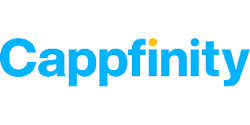Content provided by: Cappfinity
Graduates onboarding in a new hybrid world can be challenging, Dr Reena Jamnadas, Development Solutions Lead at Cappfinity, offers advice.
The importance of building an effective onboarding process for new starters has been clear for some years now.
Glassdoor reported that a great employee onboarding experience can lead to 82% better retention rates, whilst a negative experience is known to make employees two times more likely to seek out other opportunities (Digitate).
This is even more important for recent graduates who are looking to strike a balance between guidance and autonomy early on. So, how can we create a successful hybrid solution to support early career professionals?
What’s changed?
Pre-pandemic many organisations were able to effectively onboard new graduates through in-person events, such as in-office inductions, meetings with key stakeholders and away days and residential schemes filled with team activities.
This provided a natural opportunity for new starters to get to know each other face-to-face and to make the most of unplanned catchups, like quick chats on the way to meetings or talking through new ideas at the water cooler.
We lost a great deal of this organic communication when Covid-19 hit and since then, businesses have had to become savvier when it comes to helping new graduates settle into their post-university jobs.
Addressing the challenges
Onboarding is about ensuring a new starter is set up for success from the very beginning. It is also critical to building a sense of belonging and inclusion early on and so forms an important part of many diversity, equity and inclusion schemes.
Onboarding should showcase the employer brand and culture, including work-life integration and mental health and wellbeing.
Generation Z workers were found to be three times more likely to seek support for mental health during the pandemic for burnout and stress, when compared to their older colleagues (Blum, 2020). This was particularly concerning given the struggle to build social connections at work whilst fully virtual.
All of this was compounded by a difficulty in being able to separate work and home life, with many recent graduates working in house shares and bedrooms and so effectively, as described by some early career professionals, ‘sleeping in their office’ at night.
Generation Z graduates are also the first generation unable to physically work alongside their older colleagues as mentors.
Although this generation are known for being ‘do it yourself’ learners, they still require some guidance when starting a new role (Coudret, 2021). This has resulted in a hit to both productivity and confidence, as learning from more experienced colleagues has traditionally enabled learning in a different way.
How can we build effective hybrid onboarding processes for the future?
The important thing is that onboarding schemes are still able to build a sense of belonging and inclusion early on, and that this doesn’t stop at the point of recruitment. This is the time where new hires may still be exploring other opportunities and if you let their enthusiasm go cold, they may reject your offer further down the line.
We recently spoke to Paul Dilley, Early Careers Manager at Mott MacDonald and Alison Chevalier, Director, Emerging Talent Strategy at AstraZeneca as part of our Start Strong series of webinars, about the changes they’ve made to their onboarding processes to adjust to the challenges of hybrid working.
Both Mott MacDonald and AstraZeneca have been able to make changes to their onboarding strategy to recognise and make the most of the opportunities hybrid working has created, such as easier access to senior leaders’ time to meet new starters and colleagues in other offices.
Being able to use both in-person and virtual platforms has also reduced the prevalence of teams working in silos to bring everyone together and create a much more holistic impression of the company for new graduates early on.
Encouraging early career professionals to take the Strengths Profile development tool has also proved invaluable to building confidence and for having development conversations with line managers. This can also help with feelings of Imposter syndrome from a wellbeing perspective.
It’s critical to create an environment where people feel psychologically safe to not be afraid of making mistakes. Building a curriculum so that new hires know what is expected of them for the coming year can help to reduce anxieties, or even considering making a hub for existing graduate hires to create resources for new hires.
When we do bring people into the office, it’s important to maximise how that face-to-face time is spent. Consider giving early career hires something to pre-read and discuss when they meet with their mentor in the office, use the time together for creativity, and build relationships to form a network that people will want to be a part of.
Virtual will still have its place in creating greater connectivity between teams and offices and so using a hybrid model can allow us to have the best of both worlds.
Greater connectivity in a virtual world, with opportunities for face-to-face engagement will create an environment where early career hires can still have opportunities for in-person mentor learning, as well as being able to separate home and work life more easily.
Read more best practice on graduate onboarding in the ISE’s Complete Guide to Student Recruitment and Development



0 Comments